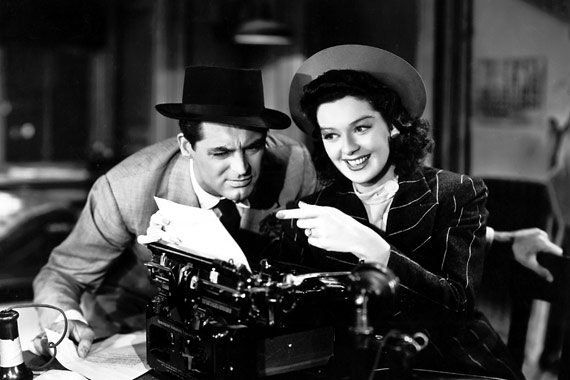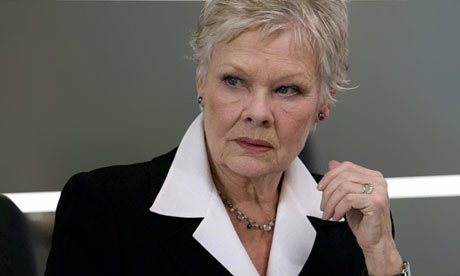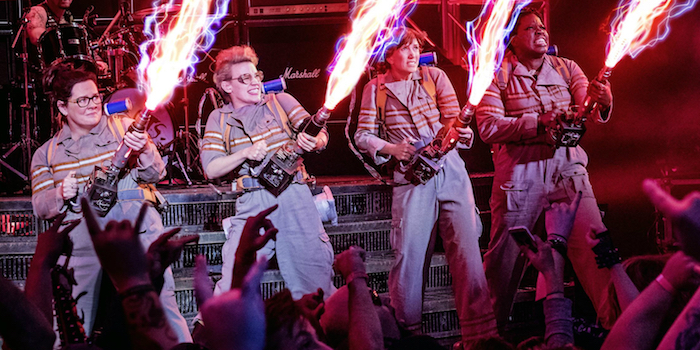Why is the gender-swapped “Ghostbusters” receiving backlash?
Quick Answer: Although the term “gender-swap” is a popular buzzword at the moment, gender-swapping is not a new trend. It began all the way back in 1940 with the film adaptation of His Girl Friday and has been used ever since for films such as the James Bond franchise and Our Brand is Crisis. However, the gender-swapped Ghostbusters remake is receiving backlash from the male fanbase that wants their favorite childhood movie to remain unchanged.
Contrary to the apparent buzzwordiness of the term “gender-swap” as it is bandied about in countless articles related to the new Ghostbusters (2016) film, gender-swapping roles previously written for male actors is not a new trend. All the way back in 1940, His Girl Friday made the swap. Based on the play The Front Page, His Girl Friday changed journalist Hildy Johnson, one of the two lead characters, from a man to a woman (played by Rosalind Russell in the film). His Girl Friday alludes to its gender swap by continually referring to Hildy as a “newspaper man,” a phrase which underlines her professional fortitude as she shines in a man’s world. The change also enables the love-hate romance between Hildy and her ex-husband, newspaper editor Walter Burns (Cary Grant); the charged banter between the two is now one of the most beloved aspects of the film. Moreover, in Hildy’s choice between a quiet marriage and returning to her newspaper life of chaos, His Girl Friday dealt with the hard decisions facing a woman who wanted a career at that time.

Rosalind Russell (right) as Hildy, a “newspaper man”
While it was not the first or last adaptation of The Front Page, His Girl Friday remains the most memorable, surpassing the stage production in popular consciousness. Many subsequent runs of the play even incorporated the change in gender into their productions to better meet audience expectations based on the film’s popularity. The lesson we can draw from His Girl Friday is that a relatively popular play saw a dramatic reinterpretation of a male character into a female, and it was and continues to be even better received by audiences and critics. The film has been selected as part of the American Film Institute’s top 100 comedic movies of the 20th century.
The kind of backlash now seen by the cast and crew of the new Ghostbusters was entirely absent in the gender-swapping case of His Girl Friday. It was even absent in the past two decades of James Bond films when Judi Dench took over the previously male role of “M.” One is left with wondering why some fans need to make virulent and painstaking attempts to discredit a film before it has even premiered.

Judi Dench as the James Bond character “M”
Ghostbusters is far from a lone example of gender-swapping. Luke Skywalker was originally a girl named “Starkiller.” Alien (1979) was written with unisex characters, designed to be interchangeable as male or female, leading to Sigourney Weaver’s being cast in a role that proved iconic and groundbreaking for female action protagonists. Nor is Ghostbusters the only gender-swapping recent or upcoming movie. Tilda Swinton in Doctor Strange (2016) and Carrie-Ann Moss in Jessica Jones (2015- ) both play roles that were originally male in the comics. Charlize Theron’s upcoming role in The Gray Man was first meant for Brad Pitt, while Sandra Bullock stepped in for George Cloony in Our Brand is Crisis (2015). Julia Robert’s role in the remake of Secret in their Eyes (2015) was played by Ricardo Darin in the first The Secret in their Eyes (2009). Dory of Finding Dory (2016) was originally conceived of as a boy until the director realized the character must be voiced by Ellen Degeneres. Given this landscape of increasingly flexible parts written for men or women, objectors will have to get used to more gender-swaps in the future.
But why all the fuss over Ghostbusters in particular?
While early critics have given Ghostbusters favorable to lukewarm reviews, to understand the backlash we must examine the audience. The original Ghostbusters film from 1984 is a nostalgic classic; its cartoon spinoff, sequel and mass merchandizing garnered a loyal fan following of adults and children alike. However, what makes adults who grew up loving a film turn to Internet trolling when previously male characters are reimagined as women? Those who wish to distance themselves from the accusation of misogynism will often use arguments like “I would love to see women as Ghostbusters if they were the daughters of the original characters” or “if only they were students and had the original characters as their mentors.” This fallacy comes from the notion that the only acceptable female character in an already established, male-dominated franchise must be the “distaff counterpart” – a character whose sole purpose in existing is to be a female version (and oft-times love interest) of an original male character. Characters like Minnie Mouse, Mrs. Pac-Man, Smurfette are common examples from the not-too-recent past. They largely lack personality and are inherently linked to the male character(s) from whom they derive.

The female cast of the new Ghostbusters remake
If we examine the media that influenced children of the 80s, during the advent of the pink aisle/blue aisle toy department divide and unavoidably gendered commercials tailor-made to sell merchandise, it becomes apparent that the distaff counterpart is a core feature of how women were presented in media to young boys of that era. He-Man has She-Ra. Huey, Dewey, and Louie had Webby. The Thundercats had Cheetara. The Autobots had Arcee. The Teenage Mutant Ninja Turtles had April O’Neil. And, yes, the Ghostbusters, both in film and in the cartoon, had Janine. With a heavy dose of pink and sometimes overtly sexualized, in each of these examples she was the token female character who had little to no merchandise.
The key to the backlash is fan ownership and fan entitlement; those that have objected to the new Ghostbusters film (before seeing it) feel that they are owed a say in how the franchise will develop, even if they are no longer the target audience. As long as these franchises remain the same on the surface, backlashers are unconcerned with other content changes. Taking archetypes from a franchise and transferring them from men to women, however, appears to be a step too far. The voices of women who too grew up as fans of boy-geared media in the 1980s are silenced; they are not afforded the same fan ownership of these properties. This current tide of fan-hate is deeply rooted in a possessiveness that largely male audiences have in regards to their childhood; these properties are viewed as “sacred” and expected to remain unchanged, at least, in appearance.

The original Ghostbusters cast
Notice that the same level of outrage is not found in other 1980s childhood properties aimed at young men: Transformers, Ninja Turtles, etc. Even though those films are critically panned and continue to turn out terrible sequels, remakes, re-imaginings, etc., they do so without the same level of ire thrown at the new Ghostbusters because some male audience members cannot ignore that they are no longer “own” this piece of media.
Women, on the other hand, are not allowed the same level of sacredness to their childhood treasures. Female-oriented properties like Barbie, My Little Pony and Strawberry Shortcake have drastically changed from their original appearance into how they are marketed currently (usually with more than one reincarnation in between). Women are not afforded the same level of inflexibility as these articles transition to new target audiences. Moreover, women who continue to collect toys are not seen to be the “collectors” that men are, and men meet little protest as they enter or even dominate originally female-designated universes. As seen with My Little Pony, men can insert themselves as the priority even over the target demographic – 5 to 10 year old girls – by taking over conventions, demanding (and being given) priority for toy production, and even receiving praise (and a documentary) for crossing gender boundaries by “coming out” about liking the show (these audience members, however, push any and all women out of fandom participation and sexualize the show’s female equine characters to the point where there are no online safe spaces for children to enjoy the show).
The message, when it comes to these nostalgia-based properties continues to be: When this particular demographic of male audience members likes something, they own it, and girls definitely are not allowed in the clubhouse.

